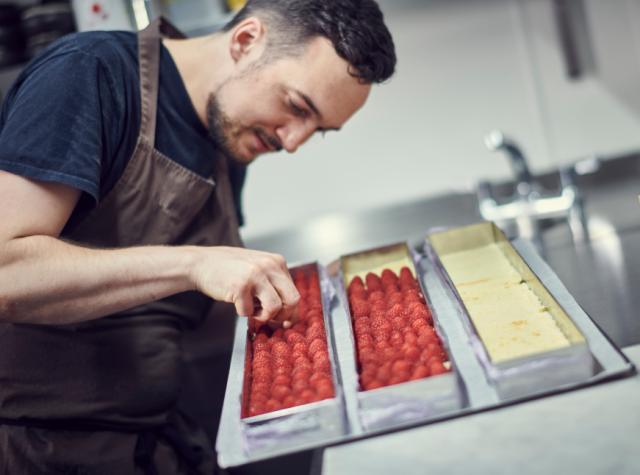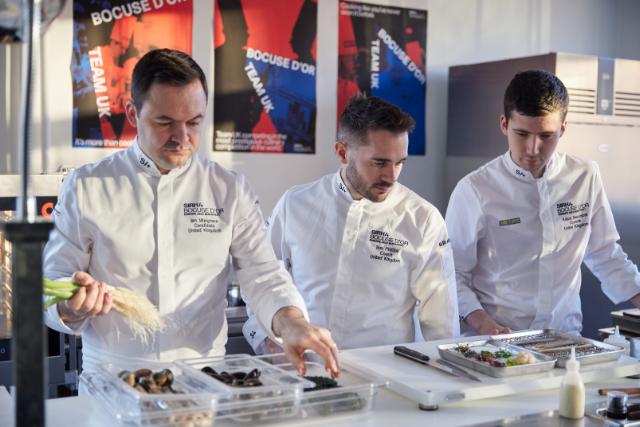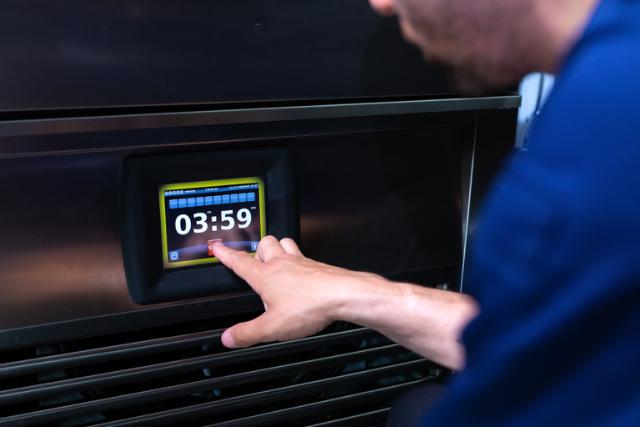
Commercial Refrigeration testing standards
What every chef and buyer should know
In a high-performance professional kitchen, precision is everything. From mise en place to plating, detail matters. The same should apply to your refrigeration equipment—after all, it's responsible for safeguarding the quality, safety, and shelf life of your ingredients.
But how do you really know your fridge or freezer is up to the job?
RAF Chef Cpl Liam Grime admits “We need to have kit that we can rely on. Without the
The answer lies in commercial refrigeration testing standards—and knowing the difference between storage vs. display testing could save you thousands and protect your reputation.
Let’s demystify the standards, what they mean for your kitchen, and how to spot a trustworthy manufacturer who tests and builds equipment well beyond the minimum. Remember domestic refrigeration has its own test standards.
Storage vs. display testing: do buyers know the difference?
Refrigeration used in commercial kitchens should be designed and tested to professional storage standards (think under-counter or upright fridges and freezers in the back of house).
Commercial display (like POS fridges) are tested to similar standards, but with different labels, and domestic storage fridges are tested to entirely different standards, and it’s critical not to confuse them.

✅ Professional Refrigerated Storage Cabinets
Tested under EN 22041, with rigorous standards that mimic real kitchen conditions:
- 30°C ambient temperature with 55% relative humidity
- Internal temperatures must stay below 5°C throughout
- Simulated door openings 6 times per hour
- Continuous 12-hour test period
- Food simulant packs (M-packs) must maintain safe and even temperatures between -1°C and +5°C
- In a test laboratory with denied cross flow or warm air with defined lighting and colour.
Manufacturers testing to this level demonstrate their equipment can perform under the intense realities of a professional kitchen.
❌ Refrigerated Display Cabinets
Tested under ISO 23953 or AS 1731, these are intended for retail or self-service environments with lower traffic and fewer temperature fluctuations. They are not built to withstand the high heat, and humidity of a commercial cookline.
❌ Domestic fridges
Designed for the home, domestic refrigeration tested under IEC 62552 includes energy consumption at two steady-state ambient temperatures of 32°C and 16°C. You’ll know that this temp is nowhere close to the heat felt in your kitchen.
In professional kitchen conditions, domestic fridges and freezers are working over-time, buckling under pressure and turning high quality, expensive ingredients into degraded and potentially dangerous foods.
🚩 Red flag: If a product is advertised as “commercial” but tested under display or domestic cabinet standards, it won't survive your kitchen without spiking energy bills, compromising food safety, or breaking down early.


Every buyer should know what real testing looks like
Inside Foster Refrigerator’s facilities
As one of the most trusted names in professional refrigeration, Foster Refrigerator sets a gold standard with one of the largest in-house testing facilities in Europe.
Like all our products, our flagship EcoPro G3 range goes through the most comprehensive testing programme within the market:
- Tested up to 40°C ambient temperature – and still delivers safe, consistent performance
- Maintains a narrow 2°C temperature band to avoid food degradation and reduce energy waste
- Reduces cooling spikes and over-compensation, which saves energy and prolongs the life of food
- G3 EP700L model uses 29% less energy than its predecessor, saving £529.20 over 10 years
- Competing products were found to use 2.5x more energy during peak evening service, with internal components working 67% of the time compared to Foster’s 27%
This kind of real-life and transparent testing ensures that chefs and buyers are investing in equipment that’s not just labelled “commercial,” but built for it.
RAF Chef Cpl Liam Grime “Foster’s fridges, freezers and blast chillers are something that we use in our kitchen on a day-to-day basis. With the quality of Foster fridges, it’s one less thing to worry about because we know that the equipment is going to do what we need it to.”
How to spot a trustworthy manufacturer
Want to ensure you're buying from a brand that plays fair and tests hard? Here’s what to look for:
✅ Published testing standards, such as:
- BS EN ISO 22041:2019 (storage cabinets)
- BS EN 17032:2018 (blast chillers and freezers)
- EcoDesign 2015/1094 regulation
✅ Temperature classification is defined from internal pack testing (look for M-pack consistency)
✅ Declared ambient testing conditions (e.g., 30°C/55% RH or higher)
✅ Details on testing scenarios such as simulated door openings and sustained high temperatures
✅ Clear distinction between display and storage refrigeration categories
Trustworthy manufacturers will be proud to share this information. If it's hard to find, that’s a red flag.


Why it matters to the chef and buyer
🍽️ For the Chef:
- Consistent core temperatures mean safer food and less waste
- Reduces temperature fluctuations that can ruin delicate ingredients
- Performance you can trust even during peak service
💼 For the Buyer or Operations Manager:
- Energy savings translate into significant cost reductions over the life of the equipment
- Lower maintenance and repair costs due to reduced system stress
- Assurance that your investment is durable, reliable, and compliant
Trust the Experts
Foster doesn’t just meet the standard—we exceed it. Our commitment to engineering excellence, rigorous testing, and real-world performance means you can focus on your food, not your fridge.
Looking for refrigeration you can rely on? Speak with our specialists today, or explore the EcoPro G3 range to see the results of real, robust testing in action.

